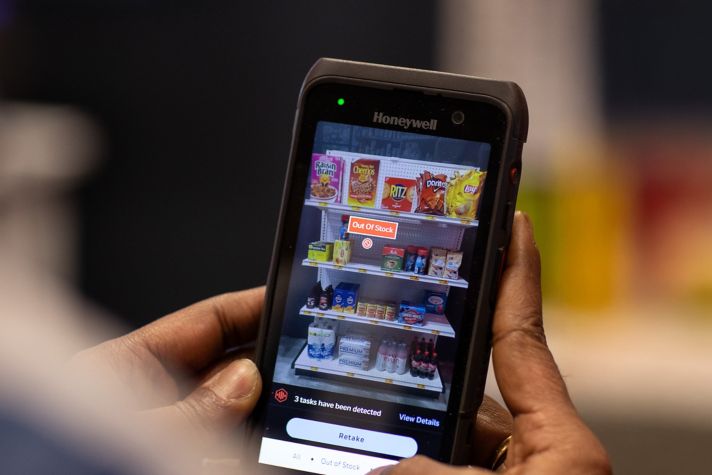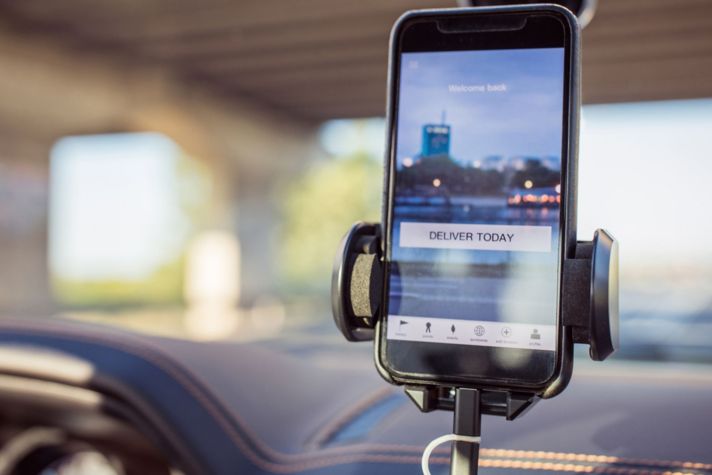-
Global
-
Africa
-
Asia Pacific
-
Europe
-
Latin America
-
Middle East
-
North America
- |
- BUSINESSES
- |
- Contact
- |
-
Global
-
Africa
-
Asia Pacific
-
Europe
-
Latin America
-
Middle East
-
North America
- |
- BUSINESSES
- |
- Contact
- |
You are browsing the product catalog for
You are viewing the overview and resources for
- News
- Top 11 Innovations of 2019
Top 11 Innovations of 2019
These breakthrough technologies will shape the future.
December 25, 2019
What's the next idea that will change the way we work and live? Here are some of the innovations from the past year that are having an impact already.
1. Power for air taxis
What: This was a major year for advancements in Urban Air Mobility (UAM) and soon air taxis will be a future mode of transportation. This means the airspace will be more crowded than ever. A new Compact Fly-By-Wire system, used in traditional aircraft, has been redesigned for air taxis. It is about the size of a paperback book.
Why it’s innovative: The compact computer system packs the “brains” of an aircraft’s flight controls into one system. Operating as though the autopilot is always on, it brings agility, stability and safety to future electronic virtual takeoffs and landings.
2. Surveillance cameras forsee buyer behavior
What: Security cameras, which traditionally monitor for theft, can now be used to help retailers make decisions about product displays, operating hours and staffing.
Why it’s innovative: Surveillance systems can predict future trends by monitoring buyer behavior and store patterns. This comes in handy for retailers who can analyze that data and influence how shoppers experience stores, ultimately boosting sales.
3. Access to Quantum Computing
What: This long-awaited technology goes from theory to impact with a new partnership with Microsoft’s Azure Quantum that will give organizations around the world access to quantum computing through an open cloud system.
Why it’s innovative: Quantum computing is a step closer to becoming a more common reality. Businesses and organizations will be able to use it to tackle problems they never would have attempted before.
4. Intelligent hearing protection
What: The VeriShield headset and cloud-based technology monitor noise levels that workers are exposed to, providing real-time alerts when noise exceeds safe levels.
Why it’s innovative: Managers can remotely monitor sounds affecting workers with a smartphone or mobile computer and alert employees to potential issues. The first-of-its-kind headset collects data on noise patterns and gives insights into long-term exposure. That helps companies develop an effective noise conservation program to protect workers’ hearing.
5. Robotic cargo unloading
What: Robots now can unload tractor trailers full of inventory at distribution centers. The Robotic Unloader eliminates the need for people to work inside the heat of a tractor trailer that can be strenuous and unsafe.
Why it’s innovative: Artificial intelligence gets the job done without an operator. That improves safety, offsets shortages in staffing and minimizes damage to goods.
6. Predictive airplane maintenance
What: With Honeywell Forge for Airlines, software combines individual aircraft and overall airline data into one dashboard, airlines can predict aircraft maintenance to fix parts before they break.
Why it’s innovative: Because it’s predictive and not just preventative, the technology helps reduce flight delays caused by unexpected repairs. That helps airlines maximize profits, improve efficiency and safety and protect passengers.
7. Real-time data makes work more efficient
What: Most of today’s global workforce do not work at a desk. These deskless workers in airports, hospitals and other industries often rely on clipboard methods to do their jobs. With Honeywell Forge technology, pen and paper methods can be replaced with mobile computers to input data immediately. Software analyzes that data and gives immediate insight.
Why it’s innovative: Reducing inefficient steps of inputting data from paper save time and money. It also gives visibility to worker productivity and the ability to harness institutional knowledge—a key priority as workforces get older.
8. Digital twins get smart about maintenance
What: Businesses that depend on equipment can use digital twin technology to mirror physical assets of a company. The digital version can use data from the physical equipment to predict machine availability, inefficient operations and maintenance needs.
Why it’s innovative: The ability to predict maintenance can optimize efficiency. Now, instead of having to stop operations or shut down for maintenance, plants can protect uptime and save money.
9. Fast communication during emergencies
What: Every second counts in a crisis. Traditional emergency communications may include relatively slow paging or color code signaling. Now, staff at hospitals, schools, airports and other high density buildings can use the Command and Control Suite to customize communications between specific teams, based on the severity of the situation.
Why it’s innovative: The command and control suite provides enhanced facility visualization, enhanced map navigation and broader editing capabilities.
10. Virtual engineering and control
What: A new generation of control system technology – which is the hardware and software that operate industrial plants – no longer relies on sequential project flows. With Experion Process Knowledge System (PKS) Highly Integrated Virtual Environment (HIVE) the virtualization approach unchains controllers and control applications from physical equipment and shifts day-to-day management of servers to a centralized data center. This allows operators to make late changes without their traditionally inherent risks and re-work.
Why it’s innovative: The technology simplifies control system design, implementation and lifecycle management. That enables plants to execute projects in less time, at lower cost and lower risk, while improving throughput, quality and operational reliability.
11. Machine learning to fight cyberattacks
What: In an industrial environment, algorithms that detect anomalies immediately identify risks to systems in industrial controls environments.
Why it’s innovative: Detecting risk adds an additional layer of protection against cyberattacks. The algorithms analyze for risk that can be missed by common cybersecurity threat detectors. That includes threats like polymorphic malware, which changes constantly to avoid detection, and emerging types of threats. It operates on real-time data to immediately identify new and emerging dangers to industrial control systems and the Industrial Internet of Things.
Copyright © 2025 Honeywell International Inc.




